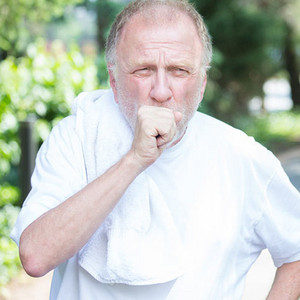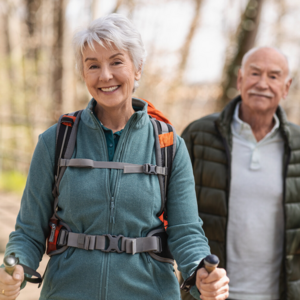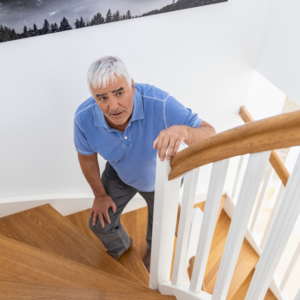
COPD, commonly known as smoker’s cough, changes your life profoundly. If the lung disease is advanced, if often restricts patients’ lifestyle. We show five common problems patients with COPD face and give advice on how to deal with them.
Housework and cleaning can be difficult for people with COPD. You have to combine movement and strength – such as pushing and pulling the weight of the vacuum cleaner. Another example is mopping the floor, when you have to apply pressure to the mop. In both cases you also have to bend slightly, which restricts the chest from moving freely, making it more difficult to breathe. Dust can also be swirled into the air while you are cleaning or cleaning products may irritate your airways.
The solution
The easiest solution would be to get someone else to do the housework. But of course, this is not always an option. So if you have to tackle it yourself, the following advice can help:
Doing the shopping and especially carrying the shopping to the car or back home can be particularly demanding for patients with COPD. If you can lean on the shopping trolley this will help with your breathing and make life so much easier when it comes to transporting the shopping. Walking and carrying weights at the same time can be a problem. This is something Eberhard Jordan is familiar with too. He has been living with severe COPD for many years and says: “While I can lift heavy bags and can walk easily, doing both at the same time is difficult. I just can't do it.”
The solution
Use a shopping trolley! The granny trolley may not be height of fashion, but it does the trick. Pulling is easier than carrying. And by the way, Eberhard Jordan uses one for his shopping too.

Walking long distances can become more and more of a challenge as the COPD progresses. Many patients respond to this by avoiding it and walk less and less. But that only serves to exacerbate the problem. This is why you should not only look at short-term solutions, but should tackle the problem with a long-term view.
The solution
The short-term solution for the problem is to drive some of the way by car, so that you then have the stamina to go on the actual walk. Would you like to stroll around the pedestrian area in town or go to a market in the town centre? Then get someone to drop you off at the edge of the pedestrian zone. This is what Doris Wohlfahrt does. The pensioner has stage 4 COPD. She likes going to markets and explains: “Most markets are held in the city centres where cars are not allowed. My COPD makes it hard for me to go long distances on foot, so my husband drops me off near the market and then goes by himself to look for a parking spot. So I can save my strength for walking (...) and not use up my energy on getting there. Even so, I still need to take several breaks while walking around the market.”
A long-term measure to be able to walk long distances and be independent is disciplined training. You can do targeted fitness and walking training with lung sport in a local group or do free online lung exercises or work with a physiotherapist. It is a long and hard road to travel, but it is worth it. This is what Eberhard Jordan has experienced. When the COPD patient was discharged from the intensive care ward in 2014, he could not even walk ten meters unaided. This was something the Viennese patient had to learn again with the help of others. After half a year he managed to walk from his apartment to the bus stop. And nowadays he goes for a 10 km walk through the Prater park in Vienna every Sunday.

An even greater hurdle for COPD patients than walking long distances is climbing stairs. Many will actively avoid this strain, even though it is actually good lung training. What should you do if there is no lift?
The solution
Because with the right dose of will, measured speed and training, even people with COPD can reach the top of the highest tower.
Anyone with chronic respiratory disease knows that it is not uncommon to be short of breath or have a coughing fit in public. Many people find that unpleasant and embarrassing. What should you do if something like that happens?
The solution
Stay calm and concentrate on breathing steadily. If you are short of breath or have a panic attack, breathing techniques and positions that make breathing easier, such as off-loading while standing, the goalkeeper position and the sitting tripod position can help.
Coughing fits can sometimes be prevented or alleviated with shallow, short breaths, pursed lip breathing and drinking plenty of water.
And remember: Shortness of breath, coughing and panic are not necessarily brought on by physical problems or an external irritant, such as smoke. People with COPD report that (mental) stress, for example, can also trigger shortness of breath. Think about which situations stress you out and make a conscious effort to avoid them. One example: Time pressure Always leave yourself a buffer before an appointment so that you don’t have to hurry.
Note: The information in this blog post is not a treatment recommendation. The needs of patients vary greatly from person to person. The treatment approaches presented should be viewed only as examples. PARI recommends that patients always consult with their physician or physiotherapist first.
An article written by the PARI BLOG editorial team.
© 2025 PARI GmbH Spezialisten für effektive Inhalation